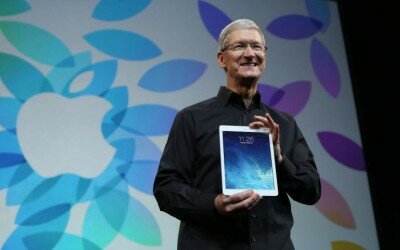Apple’s iPad Market Share Drops

At the end of October, a report from the International Data Corporation (IDC) claims that Apple’s share in the tablet market dropped to the lowest point ever, during this year’s third quarter. Compared to the third quarter of 2012, Apple’s share in the tablet market dropped by 11%, while at the same time, Apple’s rival Samsung, recorded an increase with 8% in the tablet market from the same period last year, mostly due to the company’s Android powered tablets.
IDC says that the main reason behind Apple’s slow growth is the lack of new iPad product releases during the second and third quarter of the year. Apple’s share in the tablet market dropped to 29.6% during this year’s third quarter, marking the lowest share to date, from a 40.2% market share during 2012′s third quarter, with shipments slowing to a growth of only 0.6%. During this year’s second quarter, Apple iPad shipments dropped to 14.1 million units from 14.6 million units during last year’s second quarter.
IDC expects Apple to recover and regain its market share in the tablet market with “robust shipment growth during the fourth quarter [...]” thanks to the newly released iPad Air and the upcoming second generation iPad mini with Retina display. The iPad Air was released this month, on November 1st, while the second generation iPad mini is expected to be released later this month, on November 22nd if the rumors are true.
Jitesh Ubrani, research analyst at IDC, said that “With two 7.9 inch models starting at $299 and $399, and two 9.7 inch models starting at $399 and $499, Apple is taking steps to appeal to multiple segments [...]”. He also said that “While some undoubtedly hoped for more aggressive pricing from Apple, the current prices clearly reflect Apple’s ongoing strategy to maintain its premium status”.
But it’s not just Apple that increased the price of their latest product; Amazon and Google also increased the price points of their latest 7 inch tablets, from $199 to $229, in an effort to cover the increasingly high manufacturing costs; higher resolution displays and better CPUs come with a price and in order to cover their manufacturing expenses, all tablet manufacturers have had to increase the price of their products.
Samsung managed to increase its global share in the tablet market to 20.4% from 12.4% during last year’s third quarter. The South Korean company also recorded an increase in shipments to 9.7 million units shipped during this year’s third quarter, accounting for a yearly increase of 123%. ASUS, the company that manufactures the Nexus 7 for Google shipped around 3.5 million units during this year’s third quarter, finishing on the 2rd place with a 7.4 market share. In the number four spot we can find Lenovo with 2.3 million units shipped and a 4.8% market share, while Acer finished fifth with 1.2 million units shipped and a 2.5% market share.
An interesting fact is that tablet vendors that didn’t make the top five were responsible for over a third of all tablet shipments in the third quarter of the year. IDC says that the ‘Others’ section is represented by a mix of big companies such as Microsoft, Amazon, HP and Dell and less known companies, “white box vendors” that usually sell ultra low cost Android tablets.
According to Tom Mainelli, research director, tablets, at IDC, “White box tablet shipments continue to constitute a fairly large percentage of the Android devices shipped into the market [...] These low cost Android-based products make tablets available to a wider market of consumers, which is good”. As a whole, global tablet shipments increased to 47.6 million units in this year’s third quarter from last year’s third quarter, growing with 7% from 2013′s second quarter and with 35.7% from 2012′s third quarter.











